3D CAD Modeling Examples
Enclosure | Medical Cushion | Skateboard Axle Assembly | Carrier | Sealant System | Hub Cap | Control Column | Pump Component | Duct Pipe Bend | Chiller | Forensic Modeling | Calendaring Machine | Solid Logo | Art Work
Some images can be viewed as videos - look for a video control arrow.
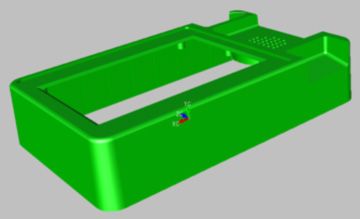
Top Half of Intercom Enclosure
This 3D model was constructed from 2D prototype drawings and adapted for the requirements of molding.
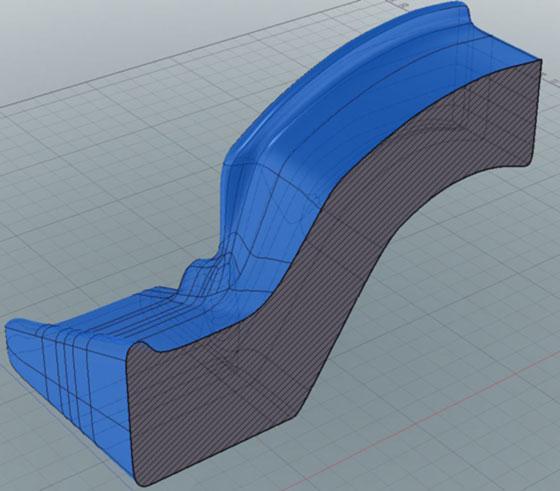
Medical Cushion
To function correctly this cushion required that complex curves be modelled exactly.
Skateboard Axle
This 3D assembly was worked up from prototype drawings. In addition to the 3D models we produced shop drawings with additional detailing.
Carrier
This example is typical of a seemingly simple piece. However the dimensional inter-relationships are critical to the fit and function. In modeling this piece we worked with the customer to resolve conflicting and missing information on the original shop drawings.
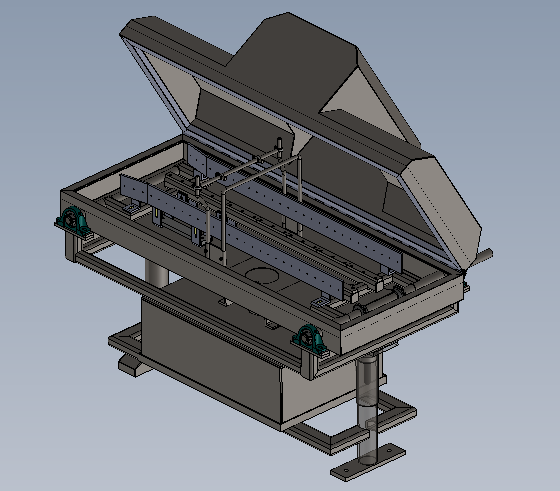
Sealant System
An old piece of equipment was due for replacement. In order for the owners to manufacture a replacement we modeled the existing component parts in 3D from partial original drawings and photographs.
Hub Cap
In this example artwork is combined with function to create the model for molding a hub cap.
Reconstructed Control Column
The customer needed to create a mold for casting a replacement control column for an aircraft. We worked from dimensioned hand drawings to create a model that captured the critical dimensions. This was then used to 3D print the mold.
Component Assembly for Pump Spares
After an existing inventory of spare parts was depleted our customer needed a modern 3D model in order to have new inventory manufactured. Fifteen different parts make up this assembly. Each was modelled from existing shop drawings.
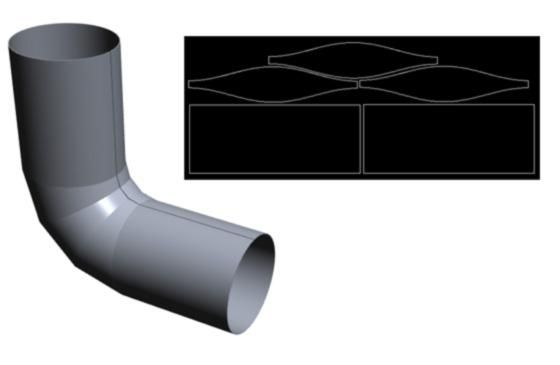
Developing Cutting Outlines
In this example we took a hand sketch of a 90-degree duct bend and developed the DXF file for plasma cutting the sheet steel so that it could be TIG welded together to fabricate the bend.
AC Chiller System - Placeholder
The requirement was for a 3D 'placeholder' that could be inserted into the design for a complete facility. The critical external dimensions are reflected in the model but no internal 3D metrics were required. This saved time and cost.
Forensic 3D Modeling
Only 50-year old foundry drawings and coordinate tables were available to a modern machine shop tasked with creating spare wing struts to keep old aircraft operational. We interpreted the old drawings and coordinate reference tables to create these SolidWorks forging models from which the parts could then be machined.
Calendaring Machine
3D modeling is not restricted to small pieces. In this example a large calendaring machine has been modeled for incorporation into a plant refurbishment design.
Solid Logo for Baseball Cap
This job required modeling a series of 2D logos into 3D for molding. The pins are required for plating. The end product is mounted on the peak of baseball caps.
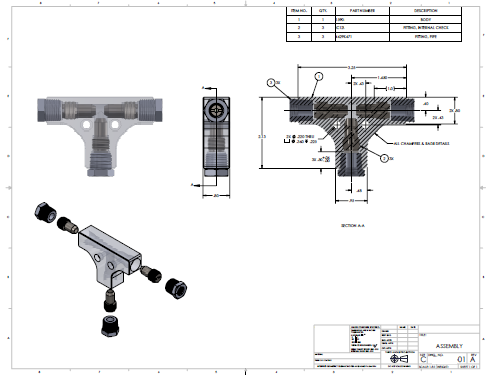
Shop Drawings
In order to manufacture from a 3D model you may need supporting information. This is an example of a typical supporting drawing produced in conjunction with its 3D model.
>